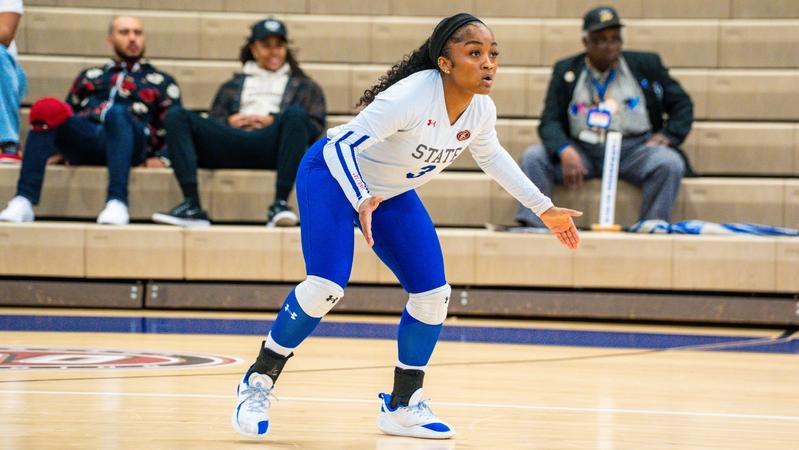NIL
Revealing the All-Quarter Century Team for the UNC Basketball program
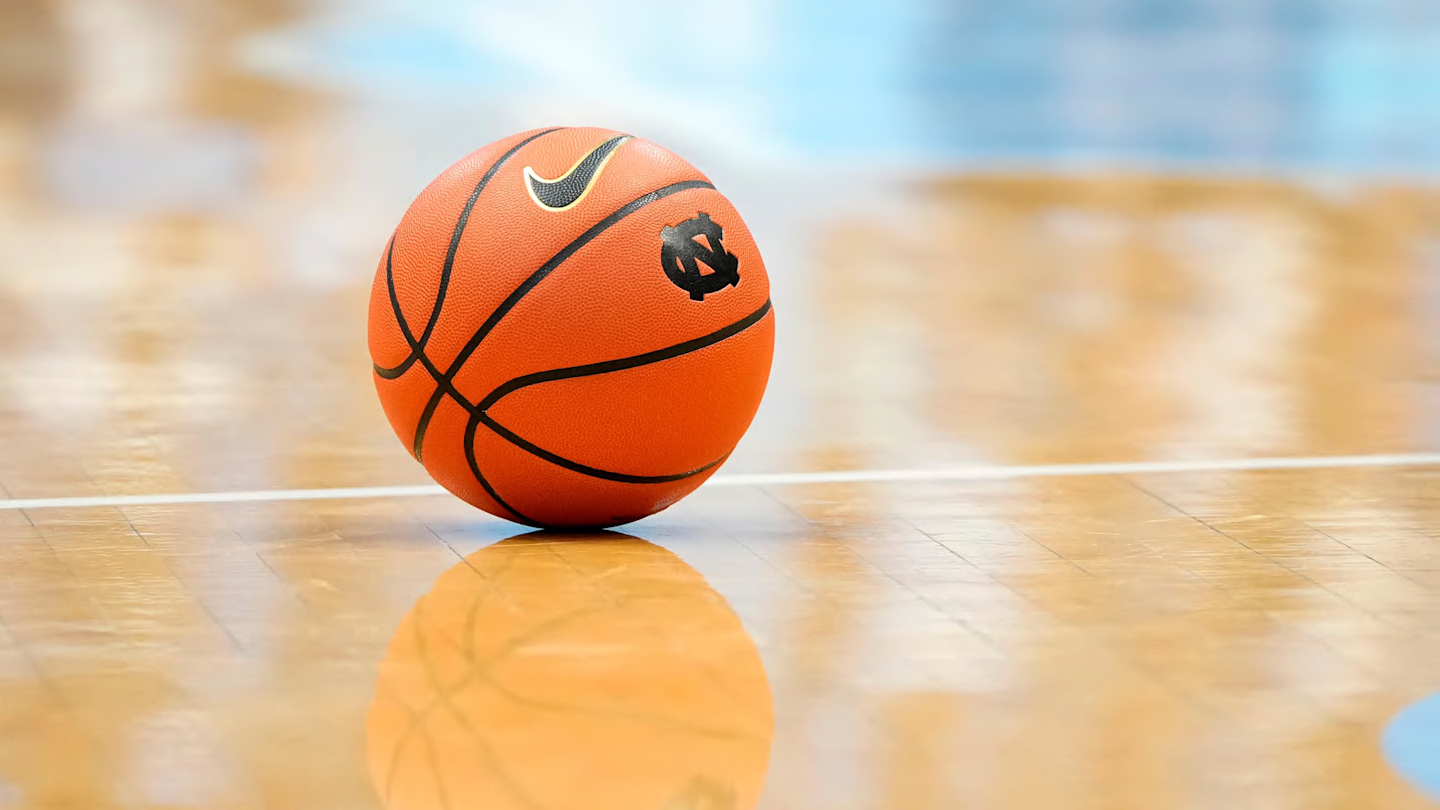
Now that we’re a quarter of the way through the 21st Century, it’s time to look back at the past 25 years of Carolina basketball.
The UNC basketball program has had some elite talent come through Chapel Hill, making it extremely difficult to name an All-Quarter Century Team. In fact, you probably could identify quite a few players who missed our list but would’ve made the squad for most other college basketball programs.
As difficult as it was, we came up with our team, comprised of 13 players.
How did we decide on 15? Well, we know that Division I programs have 13 scholarships to work with every year, but rosters are typically as many as 15 (with walk-ons). So, we took the liberty in using the spots wisely, as we all know there are more than 15 Tar Heels that could make a strong case to be on this list!
When compiling our roster, we considered several areas. Obviously, you’re not making this squad if you’re not talented, but there are other variables we considered, such as (but not limited to):
-College Production
-Team Success (during their time in Chapel Hill)
-Overall Legacy
-Years Spent at UNC (yes, long-term players benefited more than one-and-dones, but there is at least one exception)
As you probably already expected, this wasn’t an easy task! However, we’ve come up with our team, and we want to hear what you think!
Without further adieu… here’s your UNC Basketball All-Quarter Century Team.
Starters

Point Guard: Ty Lawson (2006-2009)
The point guard position was arguably the toughest to figure out, as both Ty Lawson and Raymond Felton are very strong options to start on this squad.
Lawson gets the edge based on a more decorated resume, as his Consensus All-American nod and ACC Player of the Year Award gave him the edge over Felton, a player who earned three first-team All-ACC selections.
I mean, this is a really good problem to have, even though the choice is a difficult one to make!

Shooting Guard: Wayne Ellington (2006-2009)
You could make the case that the 2009 Tar Heels don’t win the national championship without Ellington. The sharpshooter knocked down 7 of his 10 shots from beyond-the-arc during the Final Four, earning Most Outstanding Player honors.
Ellington was never afraid of the big moment, putting together his best performances in ACC and NCAA Tournament play. He was an NCAA All-Tournament and All-Region selection, and was named to the All-ACC Tournament team on three separate occasions.
When you put on the Carolina blue, you must be ready for the big-time spotlight. Wayne Ellington was more than ready for it.

Small Forward: Harrison Barnes (2010-2012)
Still to this day, Harrison Barnes is the highest-ranked recruit that the UNC basketball program has landed. Fortunately, he lived up to the hype, earning ACC Rookie of the Year honors (becoming the ninth player in program history to do so).
He followed his stellar rookie season up by leading the Tar Heels to the ACC regular-season title, the ACC tournament finals, and the Elite 8 of the NCAA tournament.

Power Forward: Tyler Hansbrough (2005-2009)
Without a doubt, Hansbrough was the easiest pick for this team. The 2008 National Player of the Year, “Psycho T’s” jersey isn’t retired by coincidence: he left the program as the all-time leading scorer and rebounder and led the UNC basketball program to a national championship.
Even considering all the elite players who have worn the Carolina Blue over the years, it’s hard to find a player (or players) with a better college career as a Tar Heel than Hansbrough.

Center: Sean May (2002-2005)
A dominant big man in the post, Sean May is best known for leading the UNC basketball program to the 2005 national title, earning Most Outstanding Player honors for the tournament.
Let’s face it: opposing teams are going to STRUGGLE to out-rebound the duo of Sean May and Tyler Hansbrough!
Reserves (in alphabetical order)
Armando Bacot (2019-2024)
Bacot served as a dominant force for the UNC basketball program during his five years in Chapel Hill. The program’s all-time leading rebounder, Bacot was a double-double machine, playing a major role in the Tar Heels’ trip to the 2022 national championship game.
Sure, he benefitted from having an additional season of eligibility due to COVID. However, you can’t take away from the fact that he was the face of the UNC basketball program during his time on campus, putting together a career for the record books.
Joel Berry II (2014-2018)
From a guy who doubted whether he belonged in Chapel Hill to one who has his No. 2 jersey hanging in the Dean Smith Center rafters, Joel Berry II is a testament to what hard work, loyalty, and dedication can do for you.
Berry developed into an All-ACC caliber guard during his time in Chapel Hill, putting together an outstanding resume to look back on. He played a integral part in the Tar Heels’ national title team in 2017, helping avenge the devastating loss in the finals a season prior. He earned Most Outstanding Player honors for that title run, proving just how valuable he was in guiding the UNC basketball program to another title.
Raymond Felton (2002-2005)
Honestly, you could really mix-and-match with Lawson and Felton at the point guard spot among the starting unit.
Felton was a All-ACC Selection each season he spent in Chapel Hill, taking the reins of the point guard position from the moment he arrived on campus. Consistency was his biggest asset, as he provided consistent presence offensively and defensively. While he could score the basketball, one of his best traits was facilitating the rock, assisting in finding open looks for his teammates to capitalize on.
Joseph Forte (1999-2001)
Forte’s two seasons in Chapel Hill were absolutely brilliant.
As a freshman, Forte was named th ACC Rookie of the Year. He followed that season up by being tabbed as the ACC Player of the Year and a Consensus First-Team All-American, averaging 20.9 points per game while shooting 45% from the floor (including 37.7% from beyond-the-arc).
Among this elite group of talent, Forte might just be the best pure scorer that this team has to offer.
Danny Green (2005-2009)
Green might not have the individual accolades that other on this list have, but he is the definition of what an all-around “glue guy” should be.
In order to be successful as a team, you need guys like Green: someone who is willing to do whatever the team needs to succeed. This shows in his overall stats as a member of the UNC basketball program, as he is the only player in Tar Heel history to record 1,000 points, 500 rebounds, 250 assists, 150 threes, 150 steals, and 100 blocks.
Green did anything the Tar Heels needed him to (whether he was coming off the bench of starting), and ended up being a major contributor for the 2009 title team.
Justin Jackson (2014-2017)
The 2016-2017 season for Justin Jackson was one of the best individual seasons we’ve seen from a member of the UNC basketball program.
Jackson took his game to a whole new level, averaging 6.1 more points per-game than he did as a sophomore. He earned the ACC Player of the Year Award and was a Consensus First-Team All-American in a season in which the Tar Heels captured their sixth national title.
Brice Johnson (2012-2016)
Johnson was dominant during his senior season at North Carolina, earning Consensus All-American honors. He finished the season averaging a double-double, setting new career highs in points per game (17), and rebounds (10.4), shooting the basketball at an elite 61.4%.
A two-time All-ACC and All-ACC Tournament honoree, Johnson was your prototypical big man to come through the program during the Roy Williams era. Williams had a knack for easing his big men into action, as the steady growth was evident over their four years with the program.
Johnson saw his role increase each season, ending his college career as arguably the country’s best big man and an eventual first round pick in the 2016 NBA Draft.
Kendall Marshall (2010-2012)
Marshall was the best passer to play for the UNC basketball program over the past 25 seasons, setting the program’s single-season assist record of 351. He absolutely crushed the previous ACC single-season mark, a record that was previously set by Craig Neal of Georgia Tech (311 assists).
If it wasn’t for a cheap shot (courtesy of Creighton), the Tar Heels were in a prime position to make a deep NCAA Tournament run. However, Marshall’s fractured wrist derailed the Tar Heels’ title hopes, as they went on to lose to Kansas in the regional finals while their point guard was sidelined.
Marshall became the third UNC basketball player to win the Bob Cousy award, joining fellow All-Quarter Century team selections Felton (2005) and Lawson (2009).
Marcus Paige (2012-2016)
Paige is a guy that UNC basketball fans wish had a better ending to his career. While his acrobatic shot (followed by a heartbreaking buzzer-beater by Villanova’s Kris Jenkins) is a sequenece that haunts us all to this day, Paige was stellar in his four-year career at North Carolina.
A three-time captain, Paige concluded his career with the UNC basketball program ranking No. 11 at in scoring (1,844 points), first in three-pointers made (299), third in steals (203), fourth in free throw percentage (.844) and eighth in assists (602).
Marvin Williams (2004-2005)
Williams was a “one-and-done” in Chapel Hill, but there’s no possible way you could leave him off this list.
Serving as the Tar Heels sixth man (yes, that’s just how good that 2004-2005 squad was!) Williams earned ACC Rookie of the Year Honors. His famous tip-in against Illinois in the national championship game is a play UNC basketball fans remember fondly, capping off his tremendous lone season at North Carolina.
This dude was so good, that he went on to be the No. 2 overall pick in the NBA Draft after not starting a single game at the college level!
NIL
SEC Transfer Portal Update: Day One

By Chris Marler
The 2026 NCAA transfer portal opened Friday morning for college football. Early movement has centered on player entries, with no major commitments yet. Here’s a day one recap.
By the numbers
Over 2,000 players entered the transfer portal within the first 12 hours of it being opened. To put that in perspective, 1,600 entered on day one two years ago. Last year, the number of entrants on day one was nearly 2,400, and at the pace we are currently sitting at this year’s numbers should surpass those.
Going rate keeps going up
The market value for certain players and positions has been fascinating to watch over the first couple of years in the portal. The first Power Four QB deal that was reported when NIL was legalized in 2021 was Miami QB D’Eriq King who got $20,000 from College Hunk Movers. Those numbers have changed dramatically.
On3’s Pete Nakos gave a list of the market value for several of the positions in the portal this year. Here’s a look at where some currently sit.
- Quarterback – $750,000 to $4 million
- Defensive Line – $500,000 to $1.5 million
- Offensive Line – $500,000 to $1.2 million
- Wide Receiver – $400,000 to $1 million
- Running back – $350,000 to $1 million
- Defensive Back – $300,000 to $850,000
Exodus by SEC teams
These numbers will fluctuate rapidly, but as of Friday, Jan. 2 at 3:30 p.m. CT here are the total players that have entered the portal for each SEC team according to 247Sports.
The first day of the window still has nearly seven hours left at the time of writing this, but as of now 260 players from the SEC have entered their name.
- Auburn – 32
- Florida – 28
- Mississippi State – 24
- Missouri – 22
- Oklahoma – 20
- Arkansas – 20
- Tennessee – 19
- South Carolina – 18
- LSU – 18
- Texas – 16
- Kentucky – 13
- Texas A&M – 9
- Vanderbilt – 9
- Alabama – 6
- Georgia – 5
- Ole Miss – 1
Make sure you’re staying up to date with all things in the portal here at Louisiana Sports with our daily SEC portal update every day at 4 p.m. CT.
NIL
3,500-yard transfer QB surprisingly linked to new college football programs
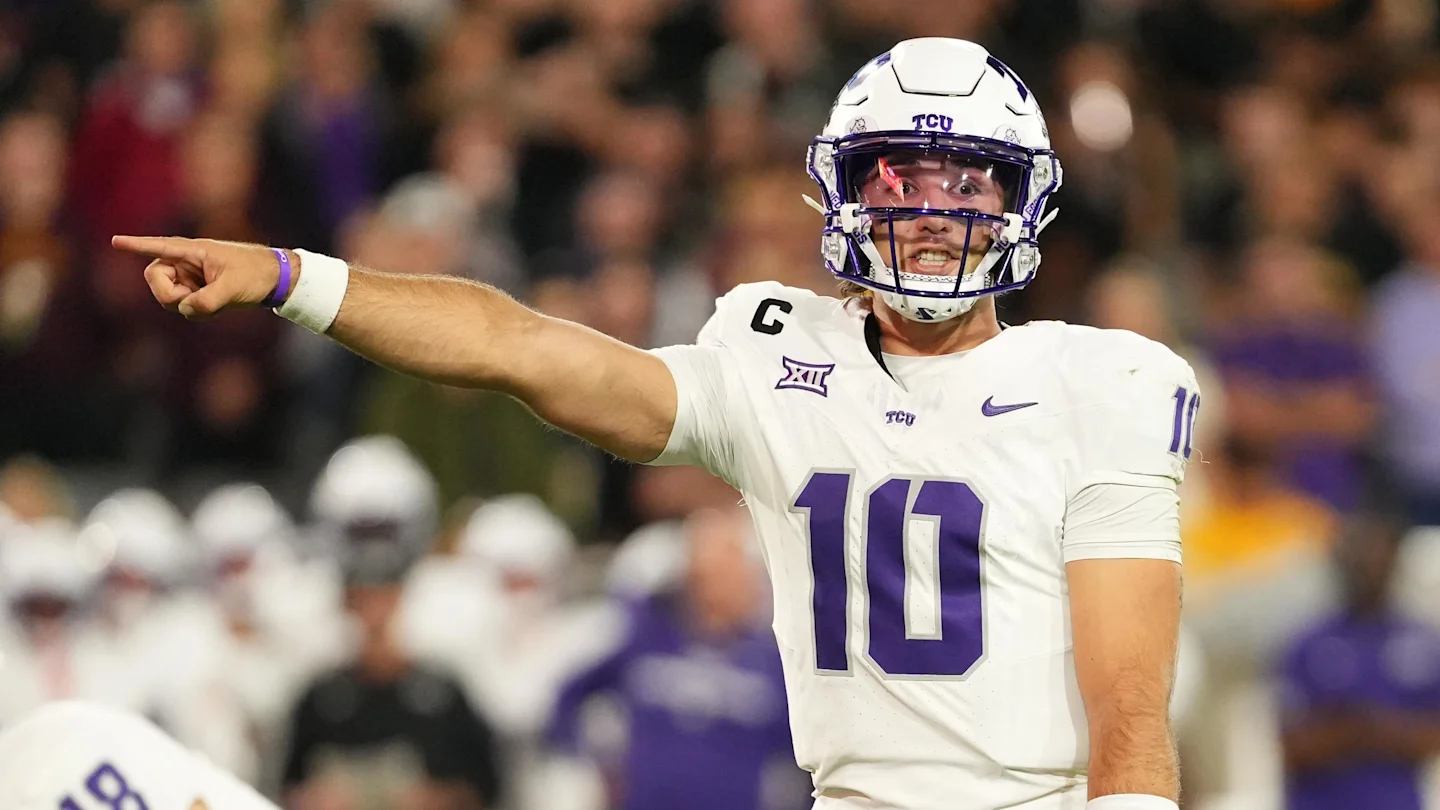
One of the more sought-after quarterbacks in the college football transfer portal may be trending towards one school, but two more candidates appear to have emerged in the arms race to secure a passer who had more than 3,400 passing yards this season.
TCU quarterback Josh Hoover announced his intention to enter the NCAA transfer portal last month, and while the top team in this year’s College Football Playoff quickly emerged as a likely landing spot, a pair of in-state rivals are also in the mix.
Indiana remains the favorite to earn Hoover’s commitment out of the portal, but now Kentucky and Louisville are both in the conversation as the quarterback scouts a new school for the 2026 football season, according to a report from On3 Sports.
Hoosiers still on top
In the midst of the single-greatest season in its history, Indiana is still the consensus favorite to earn Josh Hoover’s commitment out of the transfer portal.
ESPN college football insider Pete Thamel revealed that Curt Cignetti and the Hoosiers are poised to target Hoover as the heir apparent to Fernando Mendoza when their current starting quarterback ultimately leaves the program for the NFL Draft.
“The final domino that will unfold is Fernando Mendoza,” Thamel said when appearing on ESPN.
“The widespread expectation in the NFL is that Mendoza is going to go pro after the season. He obviously just won the Heisman Trophy.”
He added: “To replace him, I’ve been told Indiana is expected to target Josh Hoover, the former TCU quarterback. Hoover was initially committed to Indiana out of high school.”
Mendoza is currently under center for No. 1 overall seed Indiana and coming off a 35-point win against Alabama in the Rose Bowl quarterfinal round this week.
But when he decides to finally exit the program, the Hoosiers will be in the market for a quarterback, and has proved willing to use the portal to upgrade the position.
Analysts are very high on Hoover being that option, as the quarterback is currently projected to land at Indiana with 100 percent likelihood, according to the 247Sports Crystal Ball.
In-state rivals involved
Louisville and Kentucky are not only rivals on the field, but now could be in the race to secure Hoover’s commitment as one of the more sought-after transfers.
Both are in the market for a quarterback next season.
“Also in the market for Hoover are Louisville and Kentucky,” Thamel added of the Cardinals and Wildcats. “So, those are the big moves that are going to dictate the chaos in the portal.”
Miller Moss is preparing to leave the Louisville program after throwing for almost 2,700 yards while scoring 16 touchdowns and throwing seven interceptions.
Hoover has been connected to the forthcoming opening with the Cardinals, as insiders contend head coach Jeff Brohm is targeting him as Moss’ replacement.
Kentucky has gone through seven quarterbacks in the last five seasons and after the departure of Cutter Boley, will start its eighth signal caller in six years.
New head coach Will Stein is charged with resurrecting a Wildcats offense that placed 96th nationally in passing offense and 101st in FBS in total scoring output.
A player of Hoover’s experience and caliber could be a perfect foundation for a program languishing near the bottom of the SEC to make an Indiana-like jump in its respective conference going forward.
What he’s done on the field
Hoover is a native of Texas who enrolled at TCU coming out of high school after emerging as a three-star recruit in the 2022 football recruiting cycle, ranking as the No. 41 overall player at his position, according to a consensus of national recruiting services.
In 26 career games over the last three seasons, Hoover has completed more than 65 percent of his pass attempts for 9,269 yards with 71 touchdowns and 33 interceptions, rushing for an additional eight touchdowns.
More college football from SI: Top 25 Rankings | Schedule | Teams
Follow College Football HQ: Bookmark | Rankings | Picks
NIL
All-American RB strongly linked to three college football programs in transfer portal

The NCAA transfer portal has officially opened for all college football players hoping to play for new schools next season. The players have a window to enter the portal that ends on Jan. 16.
Thousands of players will be moving around in the 2026 NCAA transfer portal cycle. In some cases, it is an opportunity for prospects to showcase their skills on larger stages by transferring into Power Four schools.
Former North Texas running back Caleb Hawkins is among those entering the transfer portal to increase his exposure on a national level. He will have three seasons of eligibility at his second school.
The 6-foot-2, 200-pounder arrived as a freshman at North Texas in 2025. In his lone season with the Mean Green, he ran for 1,434 yards and an FBS-high 25 touchdown runs to go with 32 receptions for 370 yards and four touchdown catches in the air.
He rushed for over 100 yards in six games, including a season-high 198 yards in the Isleta New Mexico Bowl against San Diego State.
Hawkins received a handful of accolades for his illustrious freshman season. On a conference level, he received AAC Rookie of the Year and All-AAC First Team recognition. Nationally, he was named to the Walter Camp All-America Second Team.

Hawkins’ long list of accomplishments in one season of college football has drawn the interest of multiple Power Five programs looking to land him from the transfer portal. Pete Nakos of On3 reported on three programs pursuing Hawkins.
Oklahoma State
The connections between the staff at Oklahoma State and Hawkins would make him an instant fit for the Cowboys in 2026. Former North Texas head coach Eric Morris took the head coaching vacancy left by Mike Gundy at Oklahoma State on Nov. 25, 2025.
Morris has brought former North Texas offensive coordinator Sean Brophy with him to fill the same role in Stillwater. While there remains a possibility Hawkins ends up at another school, the coaching change will likely draw a bevy of former North Texas players to Oklahoma State.
Texas

Despite a more successful offensive output to end the season, Texas is going to have to address its running back depth in the transfer portal. Lead rusher Quintrevion Wisner and fellow running backs CJ Baxter and Jerrick Gibson are all heading for the transfer portal.
Whether Hawkins wants to be the workhorse of a group or is content to serve as a rotational piece could impact a decision to go to Texas. Christian Clark, the Longhorns’ second most productive running back, is returning to Austin in 2026.
Oklahoma

The production at running back for Oklahoma in 2025 did not play out according to plan. The expectation was for Jaydn Ott and Jovantae Barnes to be heavily featured for the Sooners. What actually happened was a mixture of Tory Blaylock and Xavier Robinson, with quarterback John Mateer leading the team in carries.
Blaylock finished with the most rushing yards on the team at 480 to go along with four touchdowns. Group of Five to SEC is a sizable jump, but Hawkins could slide in and give the Sooners the steady production they have been craving.
NIL
What it means & why it’s used
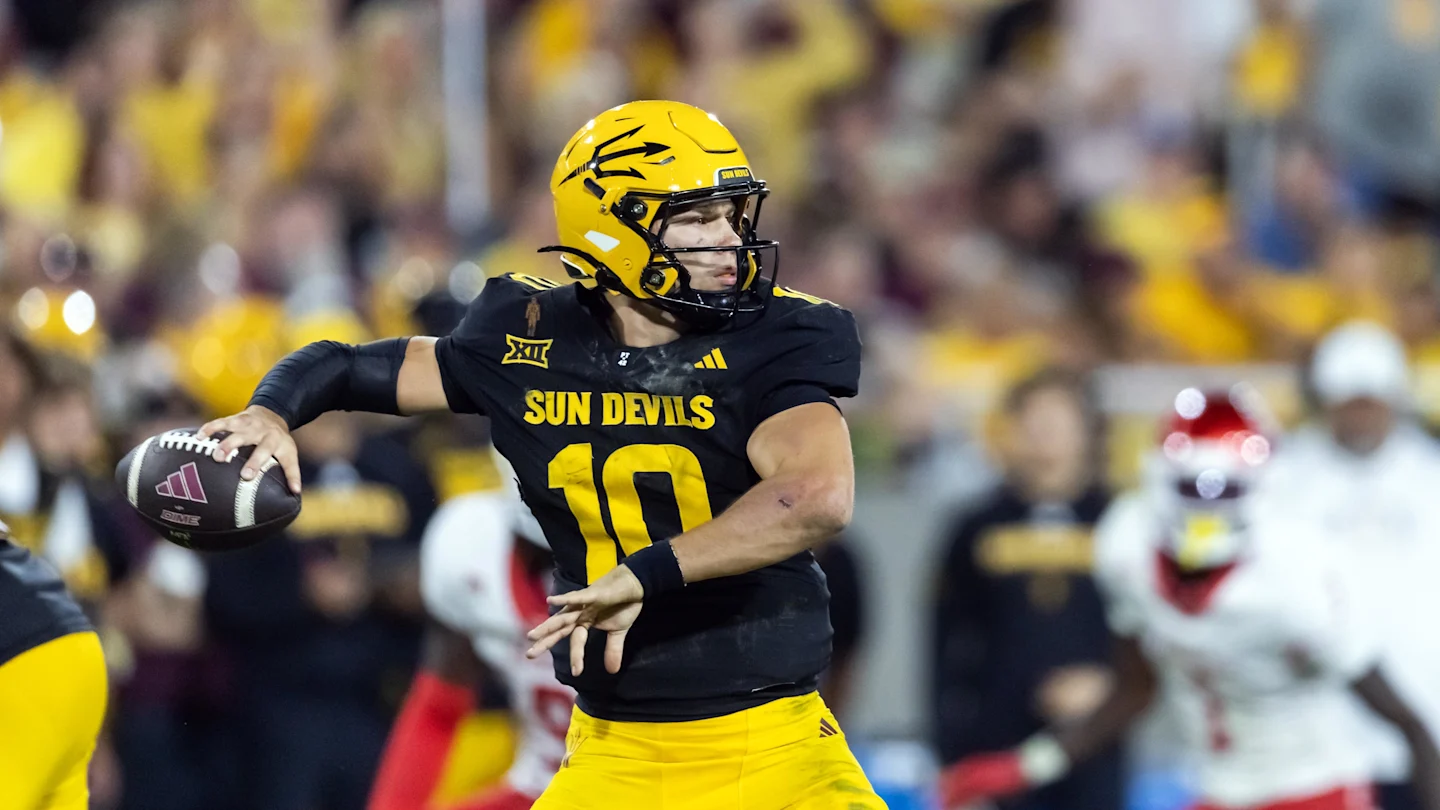
This year’s lone NCAA transfer portal window officially opened on Friday, as thousands of players across the country look for an opportunity to find a new place to call home.
The transfer portal as a whole is the wild west reincarnated and on steroids, as just about anything can happen. According to On3, last year’s portal cycles saw 4,184 players enter their name, with 68% of them committing to a new school while just 3.61% withdrew their names. Where things get complicated is the fact that a player can enter his name into the portal, but not find a landing spot for himself somewhere else. It also doesn’t mean that a player has to leave, but schools aren’t obligated to preserve their place on the team if they don’t want to.
However, the transfer portal experience varies for every player. While some athletes risk their careers by entering, others will have some of the biggest schools in the country throwing significant money at them.
The latter being one of the main reasons we see what is called a “do not contact” tag. Notable players such as Sam Leavitt (Arizona State), Isaac Brown (Louisville) and Luke Reynolds (Penn State) have entered their names into the portal with the tag, but what does that mean?
For the select few players who are good enough to take that risk it means one of two things: they either have an idea of where they are going, or they will be in contact with the schools that interest them.

While many will be outraged or naive about the matter, programs have been in touch with players months before the portal’s opening. Any inclination that the player might enter the portal throughout the year, whether it’s Leavitt getting hurt and his season ending prematurely or James Franklin being fired from Penn State, programs around the country find ways to stay in contact with the star players.
Again, this likely doesn’t apply to the backup quarterback leaving a Group of Five program, but not all situations are the same. For a player like Leavitt or Brown, they have a chance to essentially go to a school, see what it offers in terms of development, and also see how much it will offer. They then can go to another program and see if they will match or top the offer, and can control the bidding war over themselves.
The January portal window runs through Jan. 16 this year, and unlike in years past, there will be no spring window. So, once a player decides their next move, they have to live with it.
NIL
No. 1 transfer portal QB heavily linked to three major college football programs
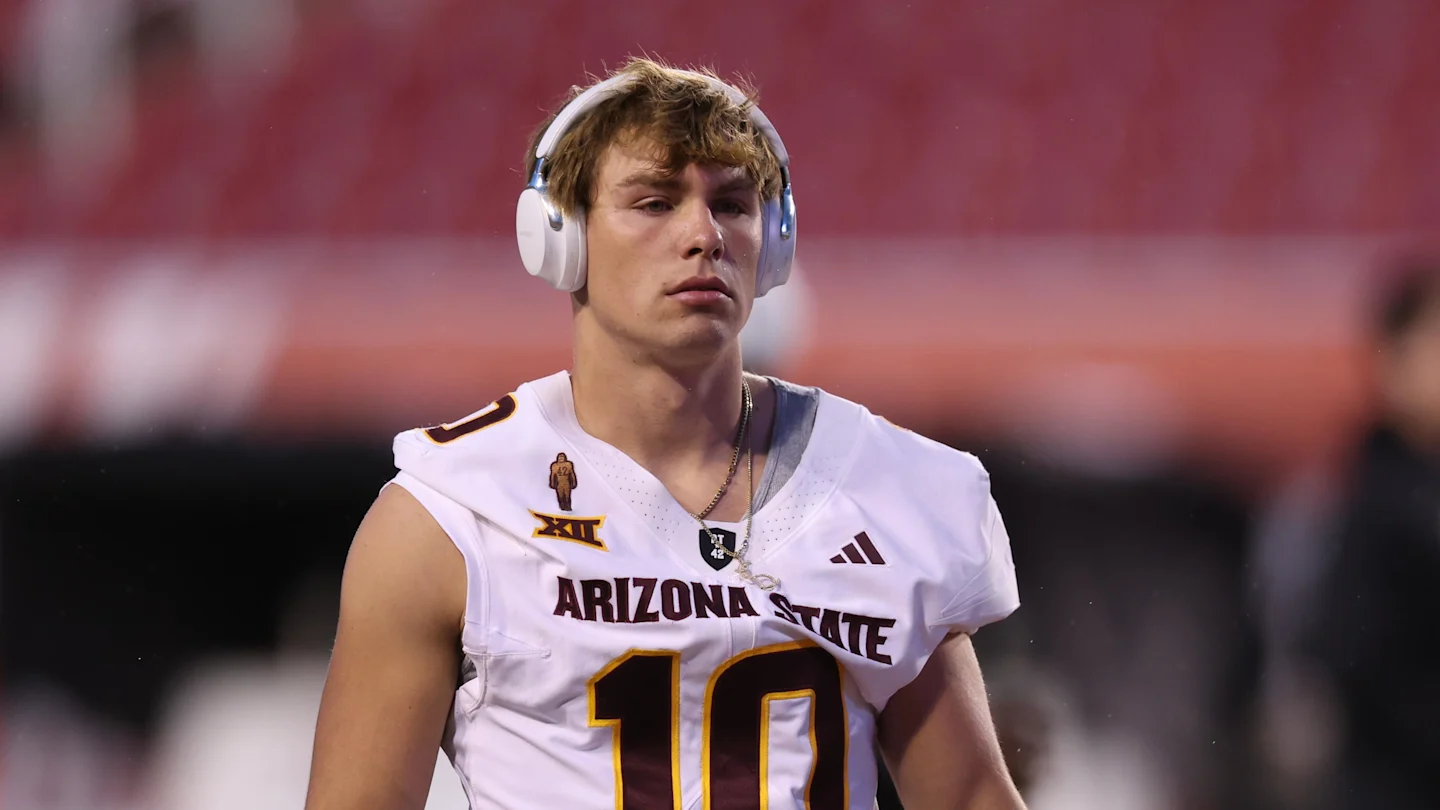
Former Michigan State transfer Sam Leavitt officially entered the NCAA transfer portal on Friday with a “do not contact” tag, meaning schools can’t reach out unless Leavitt or his camp makes the first move.
Leavitt burst onto the national scene in 2024 after transferring to Arizona State, establishing himself as the Sun Devils’ starter and finishing the season with 2,885 passing yards, 24 touchdowns and six interceptions, while adding 443 rushing yards and five scores as a true dual-threat.
He helped fuel ASU’s 11–3 finish and first-ever College Football Playoff appearance, earning Big 12 Offensive Freshman of the Year and second-team All-Big 12 honors.
Leavitt followed that up with solid production in 2025, throwing for 1,628 yards, 10 touchdowns and three interceptions while adding 300 rushing yards and five scores, though he was limited to just seven games after a lingering foot injury required season-ending surgery on October 31.
Before coming to college, Leavitt starred at West Linn High School in West Linn, Oregon, as a consensus four-star prospect and the No. 21 quarterback in the 2024 class per 247Sports, choosing Michigan State over offers from Washington State, Arizona, Florida State, and Washington.
With the transfer portal set to open at midnight Friday, On3’s Pete Nakos and Steve Wiltfong provided the latest intel on programs showing early interest, reporting that three schools have emerged as primary contenders for Leavitt — Miami, Oregon, and LSU — as the No. 1-ranked quarterback in the portal.

Oregon, Miami, and LSU each present a compelling scheme and situational fit for Leavitt.
Oregon offers a home-region landing spot with an offense built to maximize his mobility and timing with playmakers, while Miami provides a high-visibility ACC platform and a scheme well-suited for an accurate, aggressive quarterback as the Hurricanes continue to explore veteran portal options.
LSU also looms as a logical destination, with Lane Kiffin’s new staff actively working the portal and seeking an immediate upgrade at quarterback, where Leavitt’s experience and draftable traits would fit seamlessly.
It’s also worth noting that Oregon and Miami are both CFP semifinalists set to lose their starting quarterbacks, creating a rare opportunity for Leavitt to step into a title-contending environment right away.
Read More at College Football HQ
- Two unexpected college football teams emerge as contenders for $2 million QB
- Major college football programs linked to underrated transfer portal prospect
- No. 1 transfer portal QB clearly linked to two major college football programs
- College football’s leading passer linked to two programs in transfer portal
NIL
College Football TV Ratings: Pop-Tarts Bowl draws 8.7 million viewers as non-CFP viewership increases
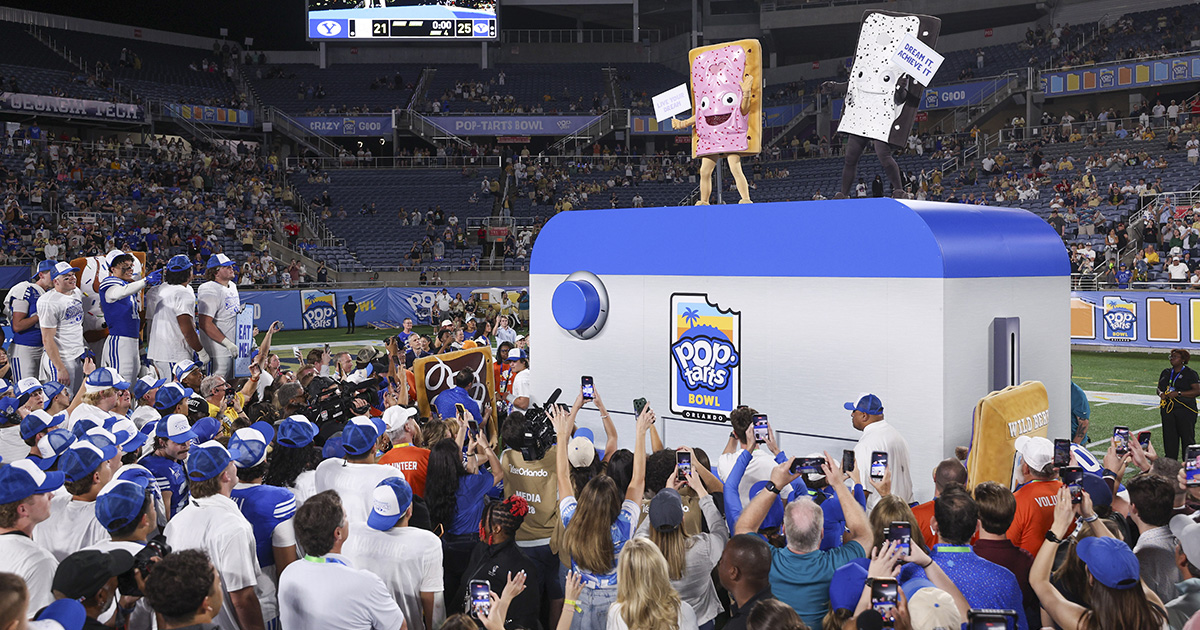
Through the first part of Bowl Season, ESPN has seen strong returns on its non-College Football Playoff games. The biggest one, of course, was the Pop-Tarts Bowl.
An average of 8.7 million people tuned in for the game, which saw BYU take down Georgia Tech on ABC, ESPN announced. It’s the best viewership for the game since 1991, when it was the Blockbuster Bowl, and became ESPN’s best non-CFP bowl game since the 2019-2020 Citrus Bowl.
SUBSCRIBE to the On3 NIL and Sports Business Newsletter
As a whole, ESPN’s bowl game viewership is up 13% for non-College Football Playoff games through Dec. 27, the network announced. On the whole, 2.7 million people on average have tuned in as multiple games drew strong numbers.
BYU’s victory over Georgia Tech came down to the final seconds as the Yellow Jackets fell short on the final possession. The Cougars then had the opportunity to partake in one of college football’s newest – and most popular – traditions. Head coach Kalani Sitake and the players got to eat one of the edible mascots after two of the three went into the toaster.
Protein Slammin’ Strawberry was the one who “escaped” beforehand, though. Officials for the Pop-Tarts Bowl game said it was the decision to “go pro,” which brought a new twist to the celebration.
The Pinstripe Bowl between Penn State and Clemson drew its best viewership on record as 7.6 million people tuned in for the Nittany Lions’ victory over the Tigers. Additionally, the Gator Bowl hit 6.0 million viewers on average – its best figure since 2009. Virginia took down Missouri in that game to secure a 10-win season for the Cavaliers.
At 4.4 million viewers, the Rate Bowl also drew its highest numbers since 2011 as Minnesota picked up yet another bowl game victory over P.J. Fleck, taking down New Mexico. The L.A. Bowl went out on a high note with a new record-high of 3.8 million viewers tuning in for Washington’s win against Boise State in the final installment of the game, as On3’s Brett McMurphy previously reported.
Three other bowl games drew record viewership, as well, according to ESPN. The First Responder Bowl between FIU and UTSA brought in 3.1 million viewers to set a new all-time high, while the Hawaii Bowl averaged 2.7 million viewers for Cal’s thrilling win over Hawaii on Christmas Eve. That made it the most-watched Hawaii Bowl since 2013. Finally, the Military Bowl averaged 2.5 million – its best since 2018 – as East Carolina took down Pitt.
-

 Motorsports2 weeks ago
Motorsports2 weeks agoRoss Brawn to receive Autosport Gold Medal Award at 2026 Autosport Awards, Honouring a Lifetime Shaping Modern F1
-

 NIL3 weeks ago
NIL3 weeks agoNike Signs 10 LSU Athletes to NIL deals
-

 Rec Sports3 weeks ago
Rec Sports3 weeks agoStempien to seek opening for Branch County Circuit Court Judge | WTVB | 1590 AM · 95.5 FM
-

 Rec Sports2 weeks ago
Rec Sports2 weeks agoPrinceton Area Community Foundation awards more than $1.3 million to 40 local nonprofits ⋆ Princeton, NJ local news %
-
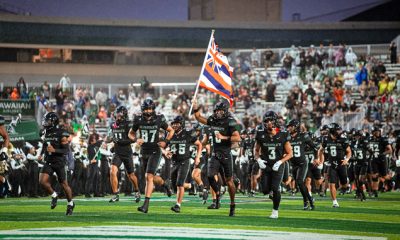
 NIL2 weeks ago
NIL2 weeks agoDowntown Athletic Club of Hawaiʻi gives $300K to Boost the ’Bows NIL fund
-

 NIL2 weeks ago
NIL2 weeks agoKentucky AD explains NIL, JMI partnership and cap rules
-

 Motorsports3 weeks ago
Motorsports3 weeks agoPRI Show revs through Indy, sets tone for 2026 racing season
-
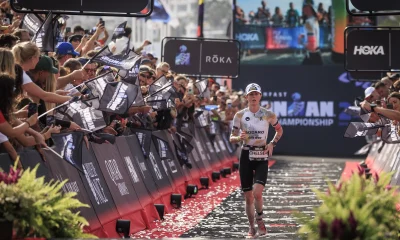
 Sports2 weeks ago
Sports2 weeks agoYoung People Are Driving a Surge in Triathlon Sign-Ups
-
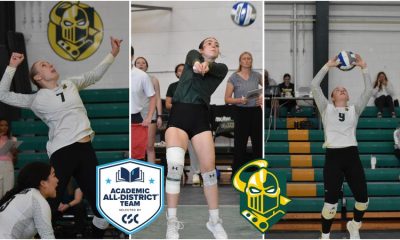
 Sports2 weeks ago
Sports2 weeks agoThree Clarkson Volleyball Players Named to CSC Academic All-District List
-

 Rec Sports3 weeks ago
Rec Sports3 weeks agoTeesside youth discovers more than a sport

































